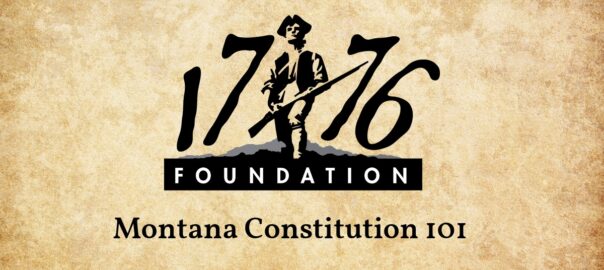In this multi-part series, we take a deep-dive into the Montana Constitution to give a better understanding of what the Constitution says, what it means and how we got here.
Part 1: The 1972 Constitutional Convention
The Montana Constitutional Convention of 1972 was a landmark event in the state’s history that led to the creation of a new constitution. The convention was held in Helena, from January 17 to March 17, 1972, and involved 100 elected delegates representing various communities and interest groups. The Democrats held a 58 to 36 majority over Republicans, with 1 Independent.
The purpose of the convention was to revise the existing constitution, which was written in 1889 and had become outdated in many respects. Montana had undergone significant social, economic, and political changes in the intervening years, and in 1970 voters overwhelming chose to hold a Constitutional Convention.
The convention began with a series of speeches by prominent Montanans, including Governor Forrest Anderson, who urged the delegates to work together in the spirit of cooperation and compromise. The delegates then elected Democrat Leo Graybill of Great Falls as president and divided themselves into eight committees to consider different aspects of the constitution.
Graybill and the Democrats made a conscious effort to demonstrate bipartisanship, such as electing a Republican as Vice-President and splitting committee assignments evenly, because they knew their strong majority would give them the final say while allowing them to present the final document to the public as a bipartisan effort.
The convention generated a great deal of public interest, with Montanans attending the sessions and following the proceedings closely. The delegates grappled with a wide range of issues, including the role of government, the rights of citizens, and the relationship between the state and federal governments. They also addressed specific policy areas, such as education, natural resources, and taxation.
One of the most significant changes made by the convention was the creation of a new article on the environment. Montana was one of the first states in the country to include such a provision in its constitution, reflecting the growing concern about environmental protection in the 1970s. The new article declared that the state had a duty to preserve and protect the environment for present and future generations.
Another major change was the adoption of a new tax system that shifted the burden from property taxes to income taxes. This change was intended to make the tax system more equitable and to provide a more stable source of revenue for the state.
The convention also addressed issues of equality and civil rights. The new constitution included provisions prohibiting discrimination based on sex, race, creed, political ideology or national origin. It also established a bill of rights that guaranteed certain fundamental rights to all Montanans.
After two months of intensive debate and negotiation, the delegates voted to adopt the new constitution on March 17, 1972. The document was then submitted to the voters of Montana for ratification, which they approved by an extremely narrow margin of just 2,532 votes.
CLICK HERE to read more from this series
Additional resources:
University of Montana Constitutional Convention Oral History Project
Montana State University Constitutional Convention Oral History Collection
